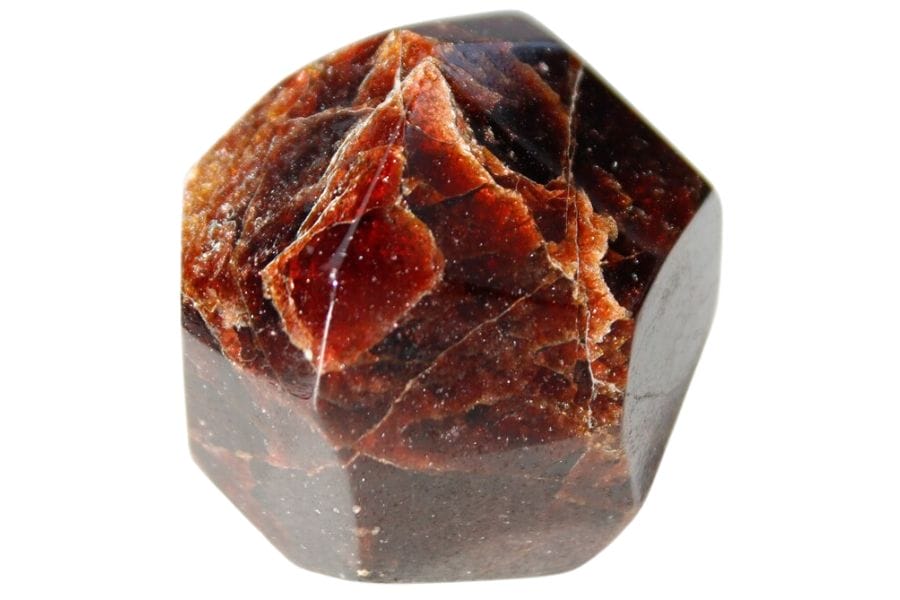In our explorations, we’ve encountered different types of rocks found in Connecticut. The state’s geological diversity is mirrored in the variety of minerals we find.
Connecticut’s landscape is dotted with minerals like almandine garnet, known for its deep red hues, and calcite, which dazzles with its array of forms. Smoky quartz also catches our eye and adds to the state’s mineral richness.
These discoveries are not just exciting finds; they’re pieces of a puzzle that help us piece together the geological history of Connecticut.
A List of The Common Rocks, Stones, and Minerals Found in Connecticut
Learn more about the rocks, gems, and minerals you can find in Connecticut:
The State Rock, Mineral, and Gem
Connecticut only has a state mineral:
| Connecticut State Mineral | Almandine Garnet |
Rockhounding in Connecticut is an exciting adventure, but it’s important to know the rules before starting. We always make sure to check with the Connecticut Department of Energy and Environmental Protection (DEEP) for the latest guidelines.
Albite
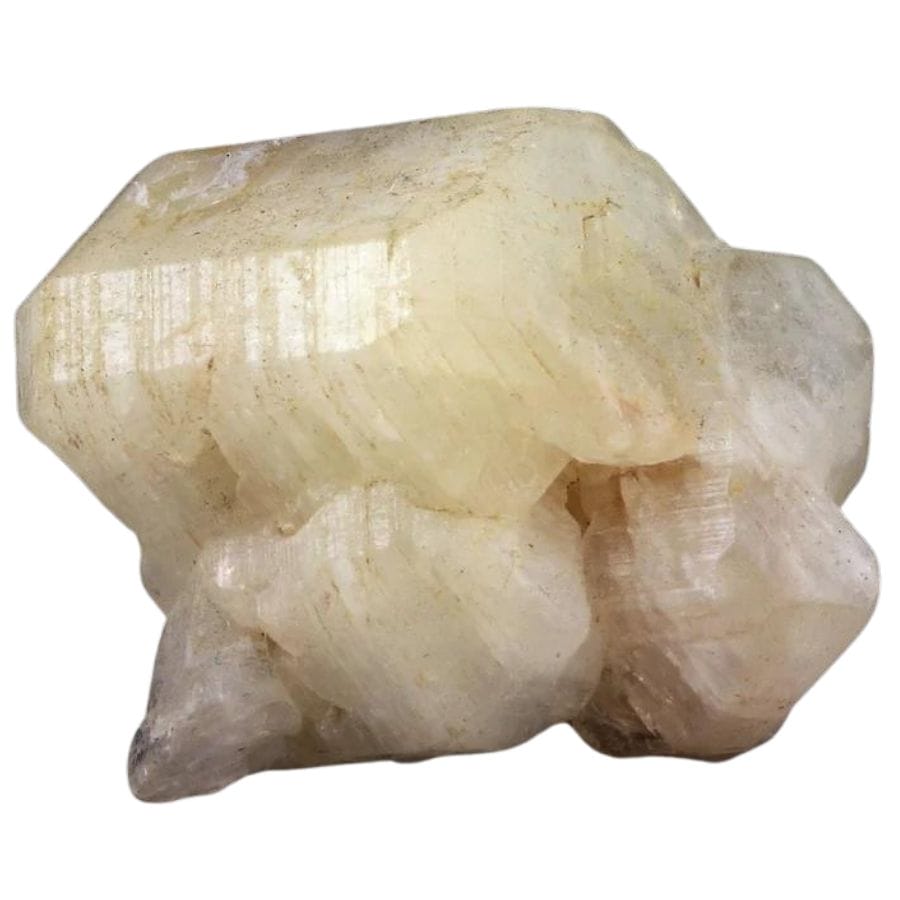
Albite is a member of the feldspar group, which is a family of minerals that make up a large part of the Earth’s crust. It’s specifically known for its white to gray color, and sometimes it can even have a bluish or greenish tint.
It has a glassy luster, which makes it look shiny like glass, and it’s usually pretty hard, making it resistant to scratches.
One of the coolest things about albite is how it forms. It usually appears in igneous rocks, but it can also show up in metamorphic rocks. Additionally, it’s often found with other rocks, like quartz.
Albite helps geologists understand the conditions under which rocks form. For example, the presence of albite can indicate the temperature and pressure conditions during the rock’s formation.
Where you can find albite in Connecticut
- Trumbull, Fairfield County
- East Hampton, Middlesex County
- Redding, Fairfield County
Calcite
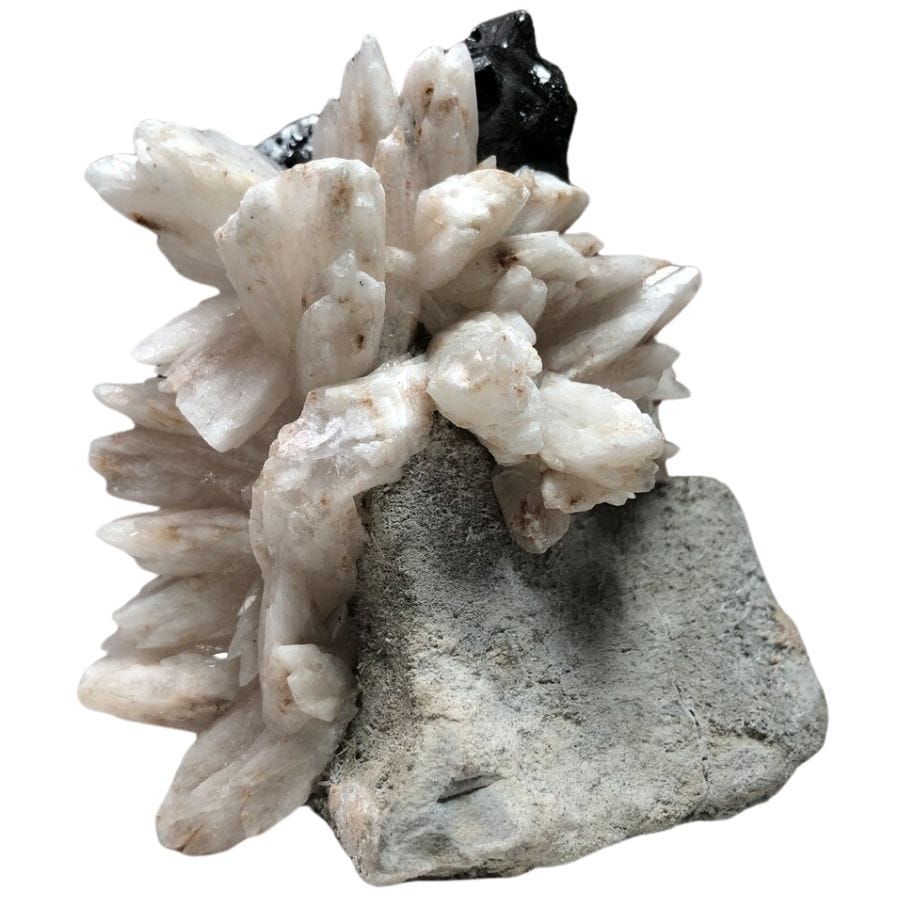
Calcite is a common mineral and can be found in a lot of places. It’s made of calcium carbonate, and it can be found in many different colors like white, yellow, and even blue or green.
One of the neatest things about calcite is that it can form in a variety of ways. It’s often found in sedimentary rocks, which form from particles settling in places like lakes or oceans.
But calcite can also grow in caves as part of stalactites and stalagmites, those icicle-like formations hanging from cave ceilings or growing from the floor.
What makes calcite especially interesting is how it reacts to acid. If you drop a small amount of weak acid, like vinegar, on calcite, it will fizz. This reaction is a big clue for geologists when they’re trying to identify minerals in the field.
Furthermore, when light passes through clear calcite crystals, it can split into two rays, creating a double image. This effect, known as double refraction, adds to the allure and value of calcite as a collector’s item.
Where you can find calcite in Connecticut
- East Granby, Hartford County
- Cheshire, New Haven County
- Brookfield, Fairfield County
Garnet
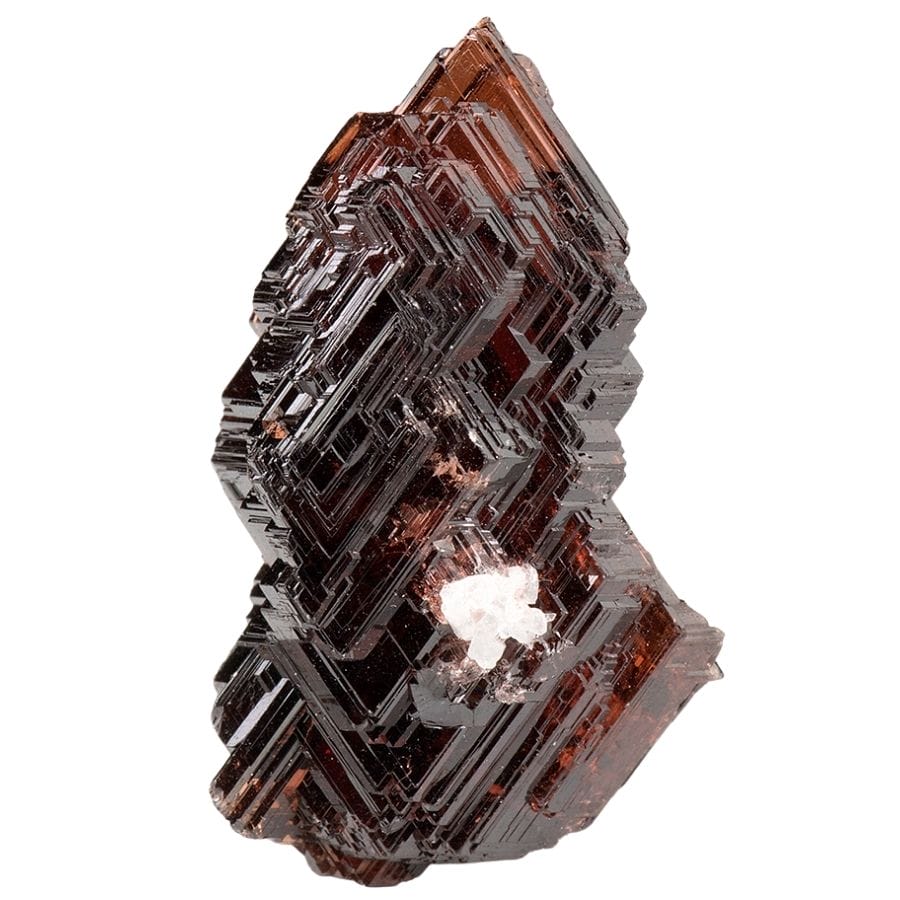
Garnet is famous for its deep red color, but garnet can also be found in a range of colors from green to yellow, and even orange and purple. In Connecticut, garnets are often found in the form of almandine, which is known for its deep, rich red color.
One of the defining features of garnet is its crystal structure. The crystals are usually shaped like little dodecahedrons, which means they have twelve flat surfaces.
The value of garnet comes from several factors. Its hardness and durability make it popular for use in jewelry, where its brilliance and color can really stand out.
Beyond its use in jewelry, garnet also has industrial uses. Because it’s so hard, it’s used in abrasive materials for things like sandpaper and waterjet cutting.
Where you can find garnet in Connecticut
- Haddam, Middlesex County
- New Milford, Litchfield County
- Bridgewater, Litchfield County
Magnetite
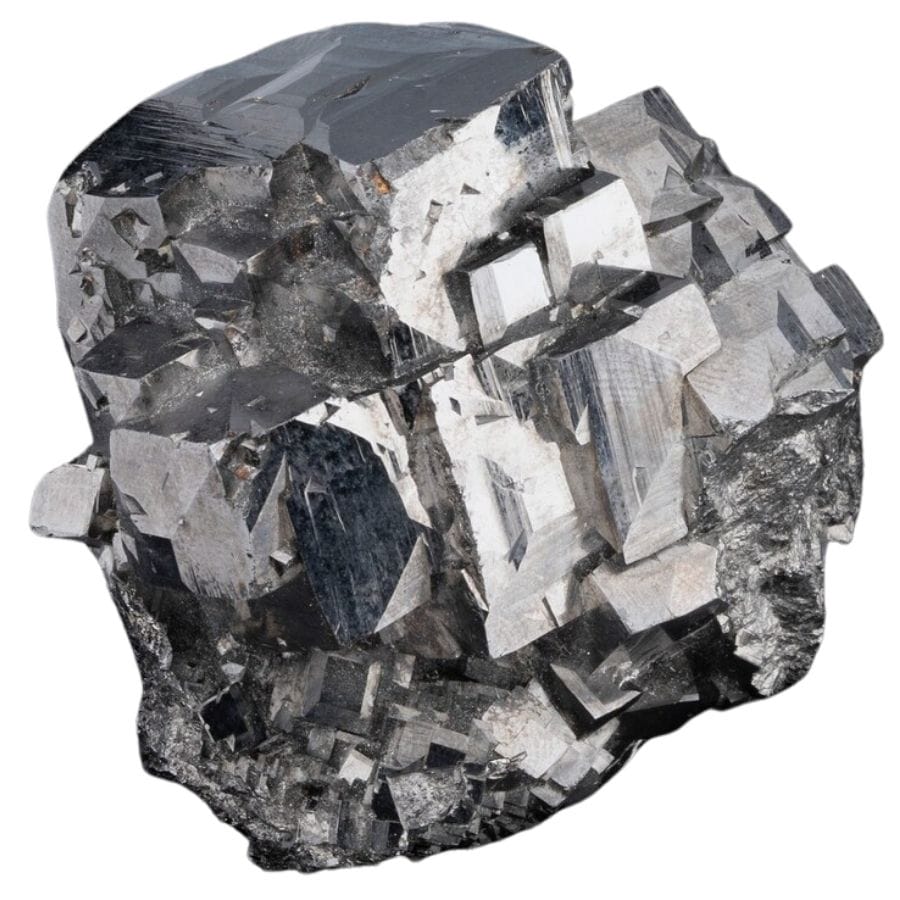
Magnetite is one of the most interesting and abundant rocks and minerals found in Connecticut. It’s a magnetic mineral, and its name comes from the fact that it has a strong magnetic pull.
This mineral is made of iron and oxygen, which gives it its characteristic color and magnetic properties.
Magnetite forms in several ways, but one common method is through volcanic activity. When lava cools down, magnetite can crystallize from the molten rock.
Another way magnetite forms is in sedimentary rocks, where it can settle out of water along with other particles.
The magnetic quality of magnetite is what makes it so valuable and interesting. It’s not just that it sticks to magnets; magnetite itself can act like a tiny magnet.
Today, magnetite’s magnetic properties are important in many scientific and industrial applications.
In addition to its magnetic qualities, magnetite is also valuable because of its iron content. It’s one of the main sources of iron ore, which is used to make steel. This makes magnetite an important mineral in the industrial world.
Where you can find magnetite in Connecticut
- Haddam, Middlesex County
- Brookfield, Fairfield County
- Pine Mountain, Litchfield County
Pyrite
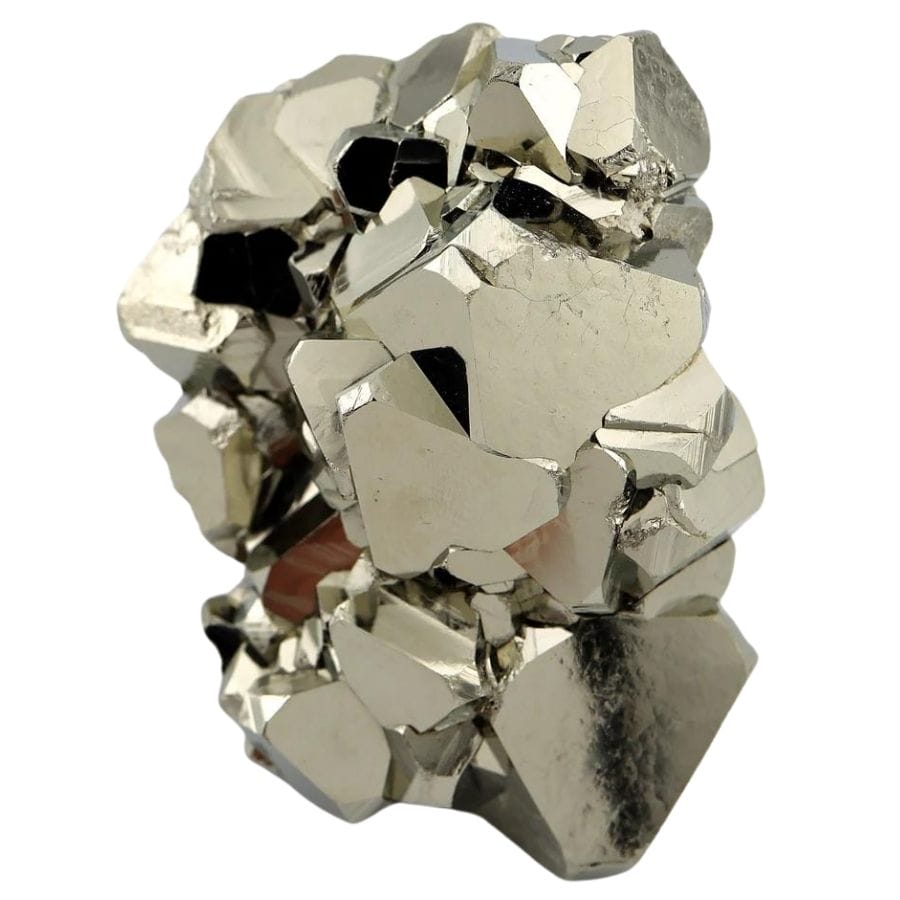
Pyrite, nicknamed “fool’s gold,” is a shiny, metallic-looking mineral that’s found in many rocks in Connecticut. It gets its nickname because it looks a lot like gold, with its yellowish-brass color and metallic luster.
It’s made up of iron and sulfur, and it forms in a variety of geological environments, often alongside other minerals like quartz and calcite.
This mineral typically forms in cubes. Because of this striking crystal shape, combined with its bright, metallic luster, pyrite is a favorite among mineral collectors.
Beyond its visual appeal, pyrite has several practical uses. It was historically used to create sparks for starting fires, as striking it against metal can cause it to spark.
In addition, pyrite is used in the production of sulfur and sulfuric acid, which are important in many manufacturing processes.
Where you can find pyrite in Connecticut
- Trumbull, Fairfield County
- Portland, Middlesex County
- Newington, Hartford County
Schorl
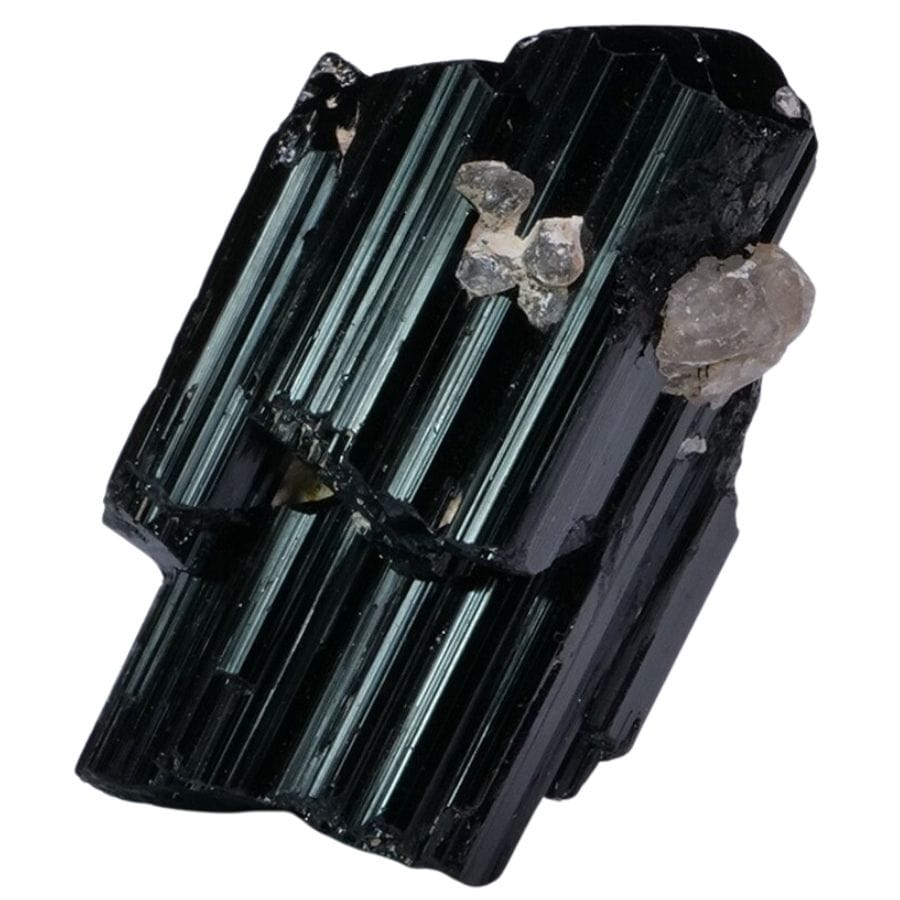
Schorl is a type of tourmaline, which is a group of minerals well-known for their interesting properties and variety of colors. In essence, schorl is the black variety of tourmaline.
It’s recognized by its deep black color and glassy luster, which makes it stand out among other types of tourmaline.
One of the most striking features of schorl is its crystal structure. It often forms long, slender crystals that can be quite striking in appearance.
These crystals can be found in a variety of rock types across Connecticut, sometimes growing with other minerals. Schorl’s hardness also makes it resistant to weathering, which is why it’s often found in good condition.
For collectors and mineral enthusiasts, schorl’s bold color and crystal forms make it a popular choice. Its durability also makes it suitable for jewelry and decorative items.
Where you can find schorl in Connecticut
- Haddam, Middlesex County
- East Hampton, Middlesex County
- Glastonbury, Hartford County
Smoky Quartz
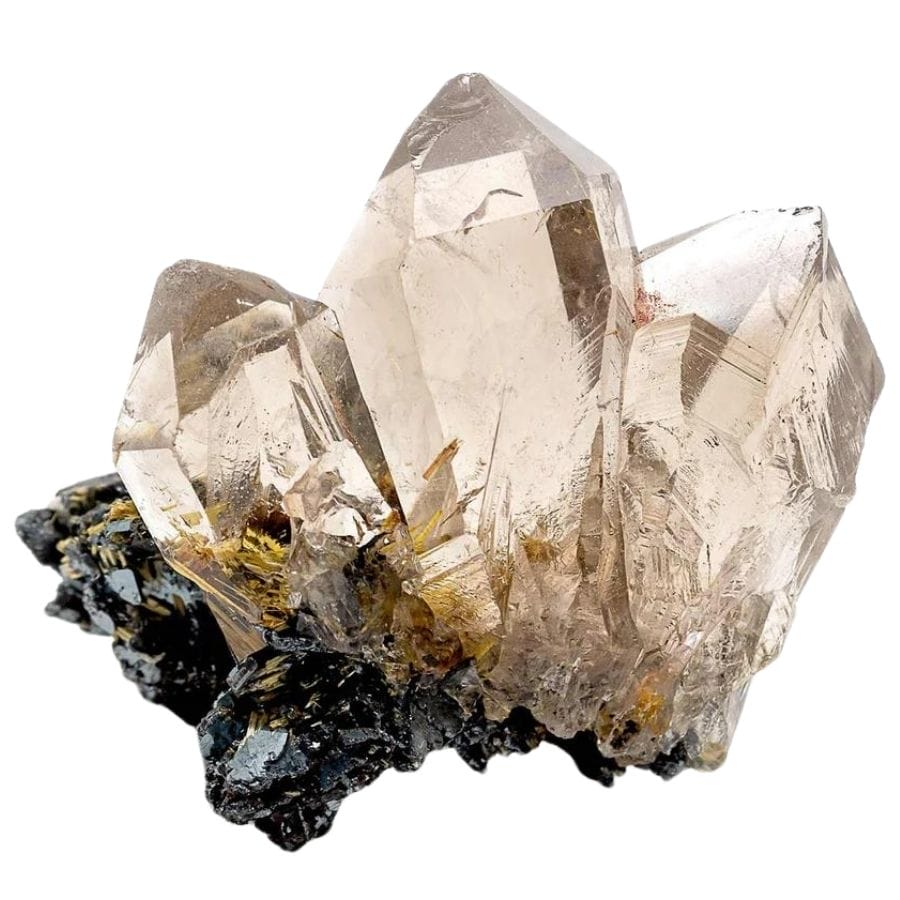
Smoky quartz stands out for its smoky color, which can range from a light brown to a deep, dark brown, almost black hue.
This unique coloration of smoky quartz is due to exposure to natural radiation from the surrounding rocks, which affects the crystal structure of the quartz.
Smoky quartz forms in the same way as clear quartz, often crystallizing from molten rock or from solutions in cracks and cavities within rocks. It’s typically found in granite and other types of rocks.
For mineral collectors, the allure of smoky quartz is in its distinctive color and crystal forms. The larger and more well-defined the crystals, the more prized the specimen is.
Smoky quartz is also popular in jewelry and ornamentation, where its unique color and durability make it a desirable choice.
Where you can find smoky quartz in Connecticut
- Willington, Tolland County
- Haddam, Middlesex County
- Glastonbury, Hartford County
The Gemstones Found In Connecticut
You can learn more about the gems that you can find in Connecticut with the help of our guides:
Adularia
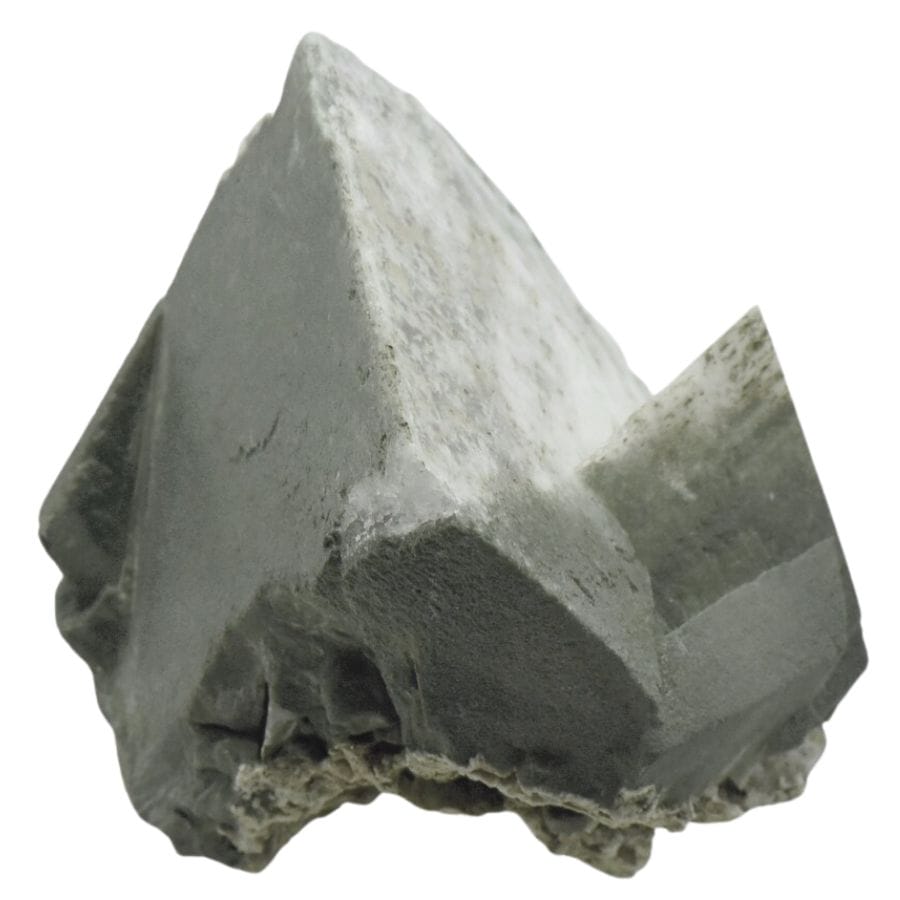
Adularia is a type of feldspar, a common group of minerals in the Earth’s crust. It has a pearly luster, which means that it has a soft, glowing sheen.
It usually appears as white or colorless crystals, but it can also show other colors like gray or yellow.
The formation of adularia is quite interesting. It often forms in cooler conditions, particularly in the cracks and cavities of rocks. This is where hot, mineral-rich water flows through and leaves behind adularia crystals as it cools.
The crystals can be small and thin, but sometimes they grow quite large, creating impressive specimens.
Finding adularia helps us understand the conditions under which certain rocks formed. It tells us about the temperatures and the fluids that were present during the rock’s formation.
For mineral collectors, adularia’s appeal lies in its delicate luster and the beauty of its crystals.
Where you can find adularia in Connecticut
- East Hampton, Middlesex County
- Derby, New Haven County
- Beacon Falls, New Haven County
Amethyst
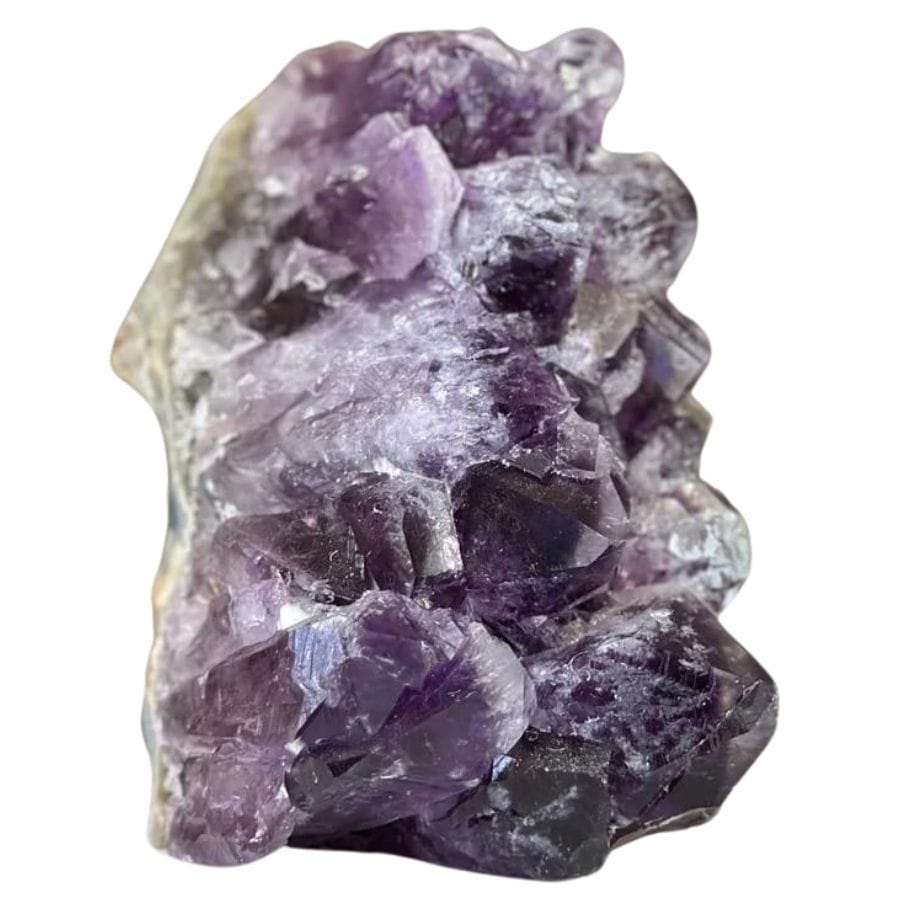
Amethyst is a stunning purple variety of quartz. It has a rich purple color, ranging from light lavender to deep violet. The color of amethyst is due to impurities of iron and other trace elements within the quartz.
When we find amethyst in Connecticut, it’s usually within rocks that have small cavities or vugs, where the crystals have had the space to grow and develop their characteristic purple color.
The captivating color of amethyst makes it a popular choice for jewelry and decorative pieces. Its durability also adds to its appeal, as it’s hard enough to be used in various types of jewelry.
It’s also of interest to collectors and geologists. Its presence in a rock can tell us about the conditions under which the rock formed, such as the temperature and the chemistry of the fluids that flowed through the rock.
Where you can find amethyst in Connecticut
- East Granby, Hartford County
- Salem, New London County
- Woodbury, Litchfield County
Aquamarine
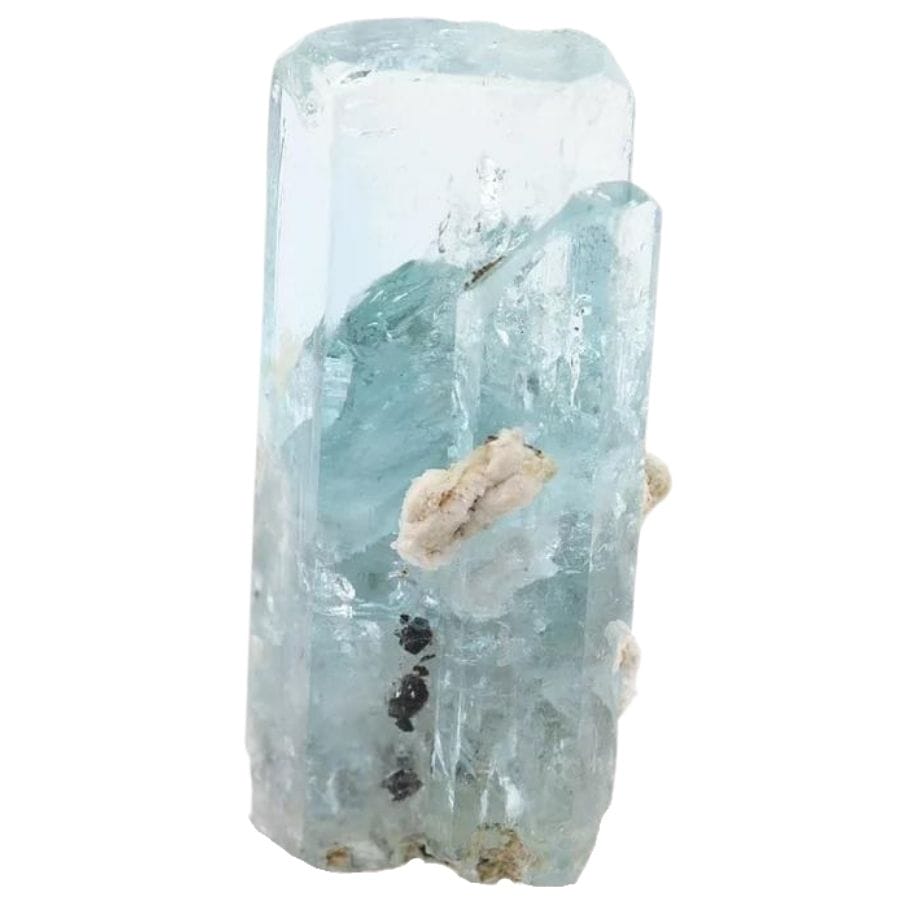
Aquamarine is a type of beryl, the same mineral family that includes emeralds, but aquamarine is known for its stunning blue to blue-green color. This color comes from trace amounts of iron in the mineral’s structure.
Aquamarine forms in granite rocks and is often found in cavities or veins within these rocks, where it grows in beautiful, hexagonal crystals.
The formation of aquamarine is a process that occurs over millions of years. As granite rocks are slowly cooled from molten magma, aquamarine crystals begin to form. The slower the cooling process, the larger the aquamarine crystals can grow.
People are often curious about how much aquamarine is worth, and it can vary widely based on different qualities.
Large, clear specimens are particularly prized. The depth of color also plays a significant role in its value; deeper and more vibrant blues are often more sought after.
Where you can find aquamarine in Connecticut
- Haddam, Middlesex County
- Portland, Middlesex County
- Glastonbury, Hartford County
Morganite
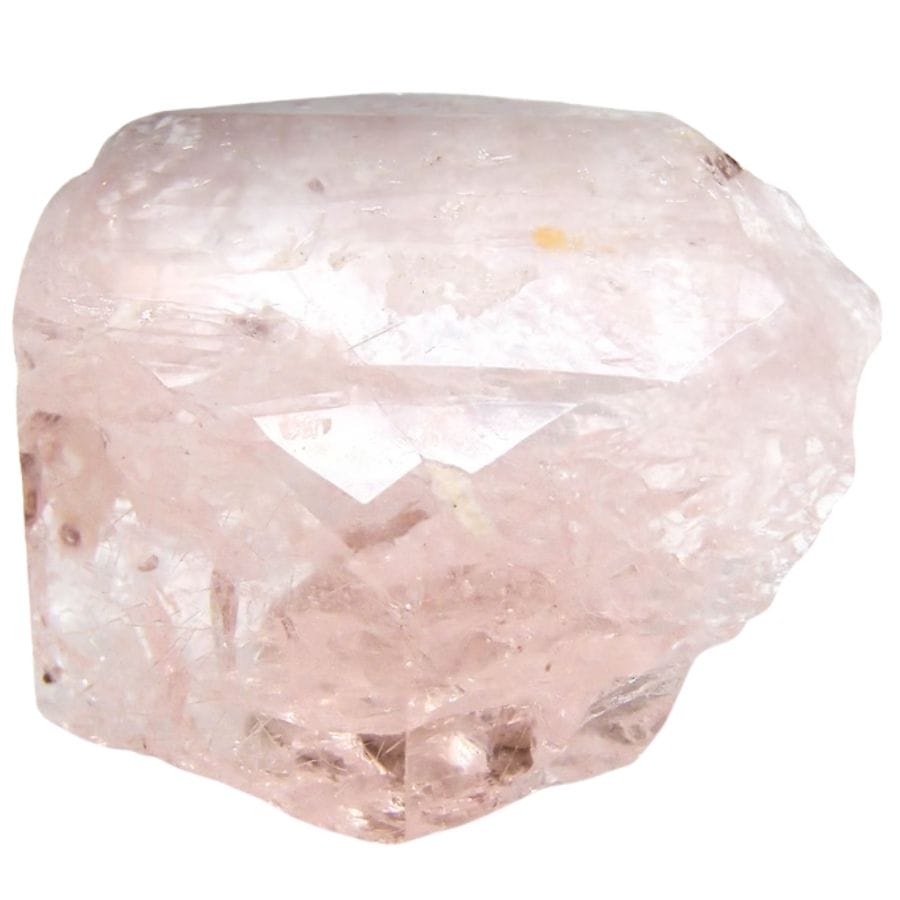
Like aquamarine, morganite is a member of the beryl family. However, morganite has a unique pink to peach color. This beautiful coloration is mainly due to traces of manganese in the crystal structure.
When we find morganite, it’s usually in the form of large crystals that can be quite impressive. The clarity and size of the crystals contribute significantly to their value.
Color is a major factor that influences how much morganite is worth. The more vivid and pink the stone, the more valuable it is. Clarity is another important aspect, as clearer stones are more sought after.
Finally, the cut of the gemstone plays a role in its value, as a well-cut stone can enhance its color and clarity.
Where you can find morganite in Connecticut
- Haddam, Middlesex County
- Middletown, Middlesex County
- Redding, Fairfield County
Opal
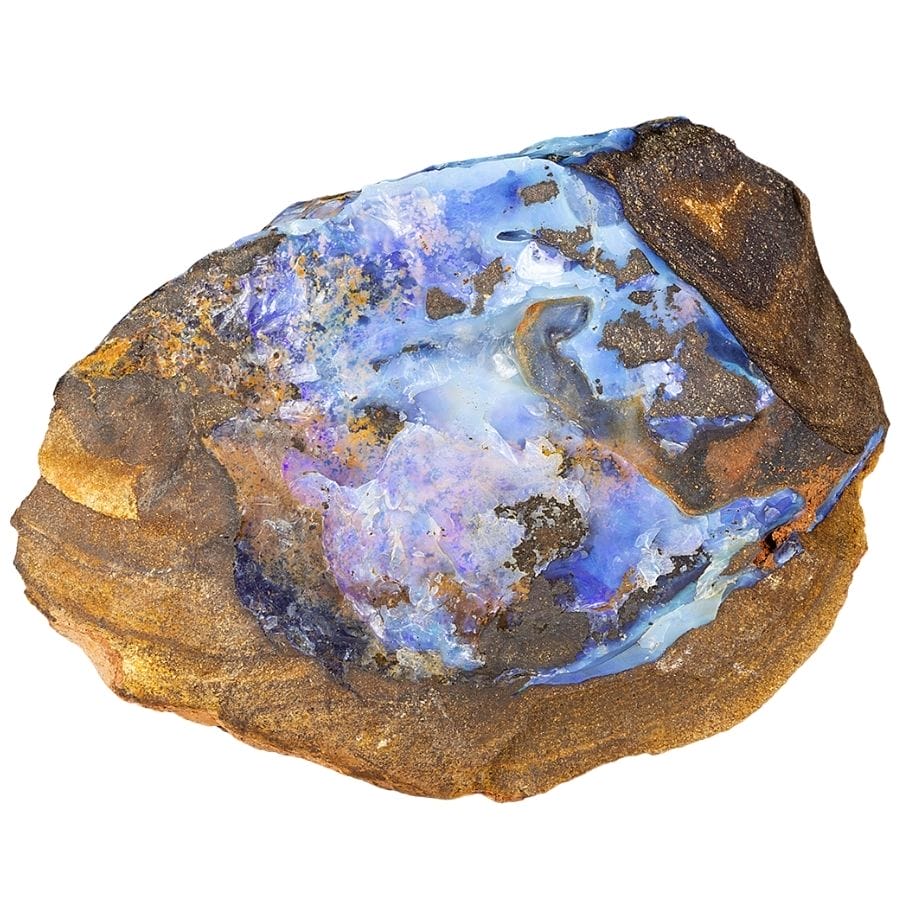
Opal is one of the most unique and captivating gemstones found in Connecticut. Unlike most other gemstones, opal does not have a crystalline structure; instead, it is amorphous, meaning its particles are arranged randomly.
This unique structure contributes to opal’s famous play-of-color, where the stone can display a variety of colors when it catches the light.
This play-of-color is the most significant factor in the value of opal; opals showing a full spectrum of colors are particularly prized. The brightness, pattern, and color range within each individual stone also play a big role.
Opals can range from milky and translucent to vibrant and fiery, with colors changing and shifting as you move the stone.
Where you can find opal in Connecticut
- Glastonbury, Hartford County
- Portland, Middlesex County
- Roxbury, Litchfield County
Topaz
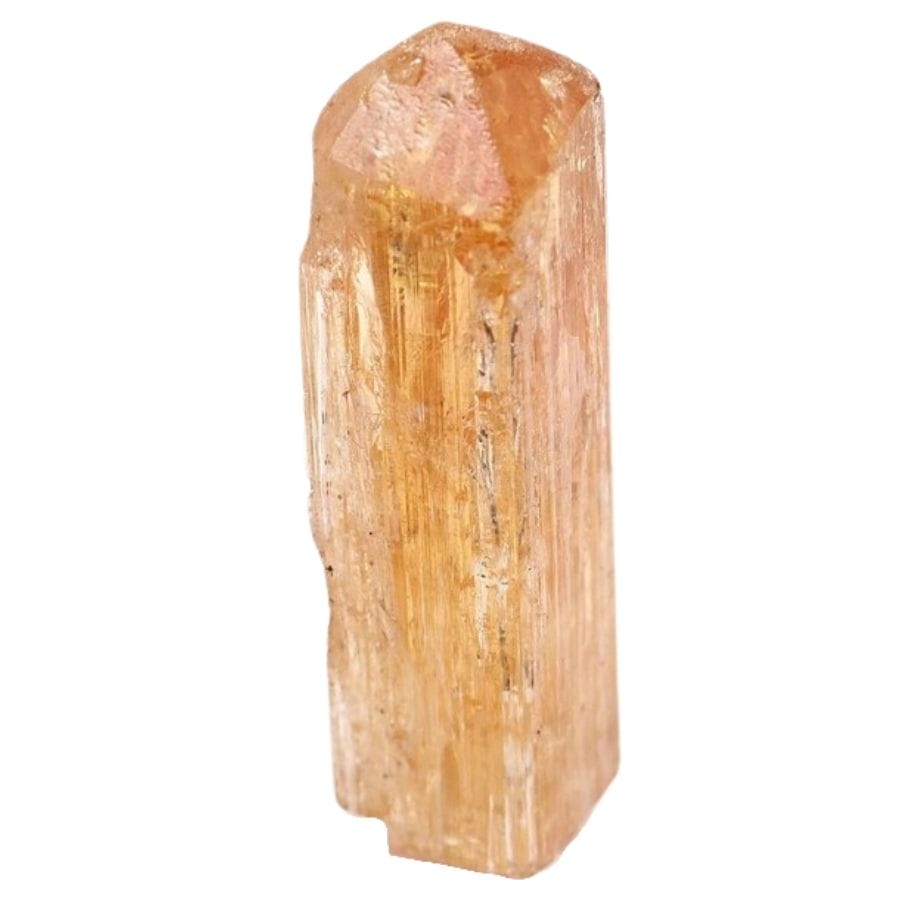
Topaz comes in a wide range of colors. It can be yellow, brown, blue, green, and even colorless. This mineral forms in the cavities of granite rocks, where the last bits of mineral-rich liquids solidify as the granite cools down.
One of the interesting things about topaz is its hardness. It’s one of the hardest naturally occurring minerals, making it very durable. This hardness is a big reason why topaz is valued for jewelry, as it can withstand scratches and abrasions.
However, despite its hardness, topaz can be split with a single blow, a property known as perfect cleavage.
The clarity of topaz also contributes to its value; clear, flawless stones are highly prized.
Color is another significant factor in determining a topaz’s value. The rarer the color, like pink or red, the more valuable the stone.
Where you can find topaz in Connecticut
- Trumbull, Fairfield County
- Haddam, Middlesex County
- Middletown, Middlesex County
Tourmaline
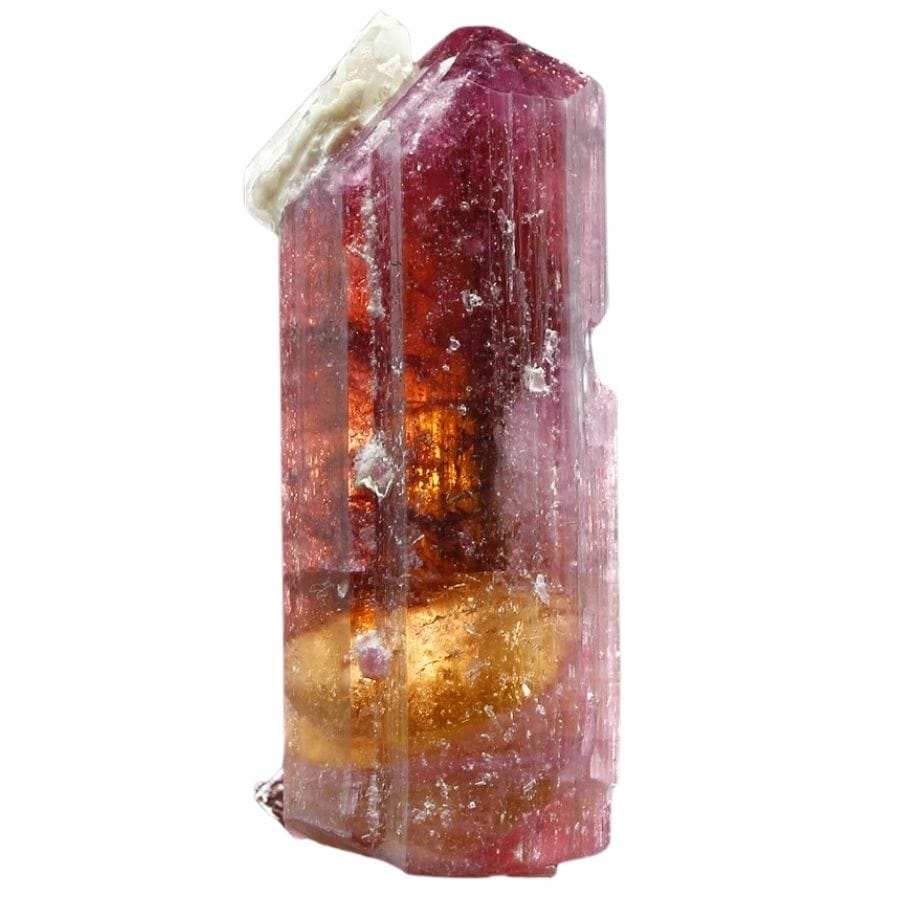
Tourmaline comes in almost every color, from deep greens and blues to vibrant pinks and reds. The variety of colors in tourmaline is due to different elements in its structure, like iron, manganese, and lithium.
One of the fascinating things about tourmaline is its ability to have multiple colors in the same crystal. This is called zoning, and it happens when the conditions change while the crystal is growing.
For example, a crystal might start growing in one color, but if the elements in the surrounding environment change, the new growth can be a different color.
The most prized tourmalines are those with vivid colors and clear transparency. Some of the rarest colors, like neon blue or pink, are especially valuable.
Where you can find tourmaline in Connecticut
- Danbury, Fairfield County
- Haddam, Middlesex County
- Portland, Middlesex County
The Crystals Found In Connecticut
Our guide to crystals in the state can help point you to the best spots if you want to collect great specimens:
Epidote
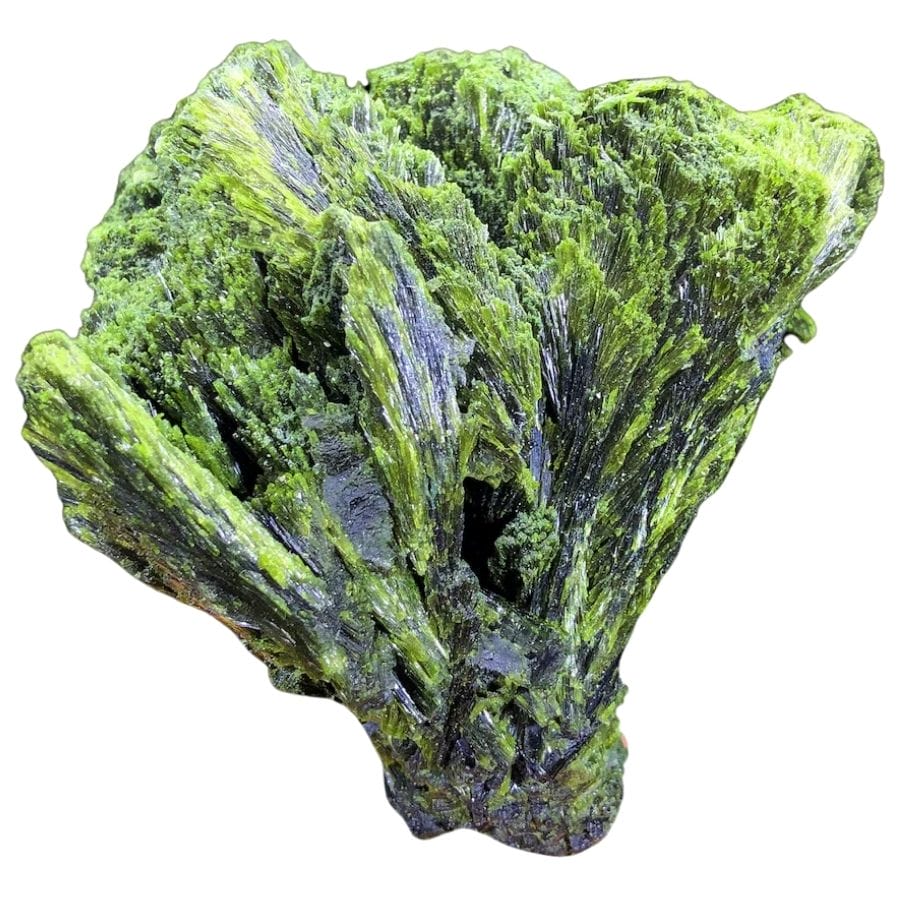
Epidote has an olive green color, which comes from its high iron content. It forms when calcium, iron, aluminum, and oxygen come together under the right conditions.
This mineral grows in long, slender crystals that can sometimes look like little columns. These crystals can be quite striking, with their deep green color and elongated shapes.
In Connecticut, we’ve found epidote in a variety of rock types, often alongside other minerals like quartz and feldspar.
One of the striking features of epidote is its crystal structure. It forms in long, slender crystals that can be quite impressive. These crystals are often clustered together, creating eye-catching mineral specimens.
Deep green, well-formed epidote crystals are especially sought after by collectors.
Where you can find epidote in Connecticut
- Coventry, Tolland County
- Portland, Middlesex County
- Haddam, Middlesex County
Dolomite
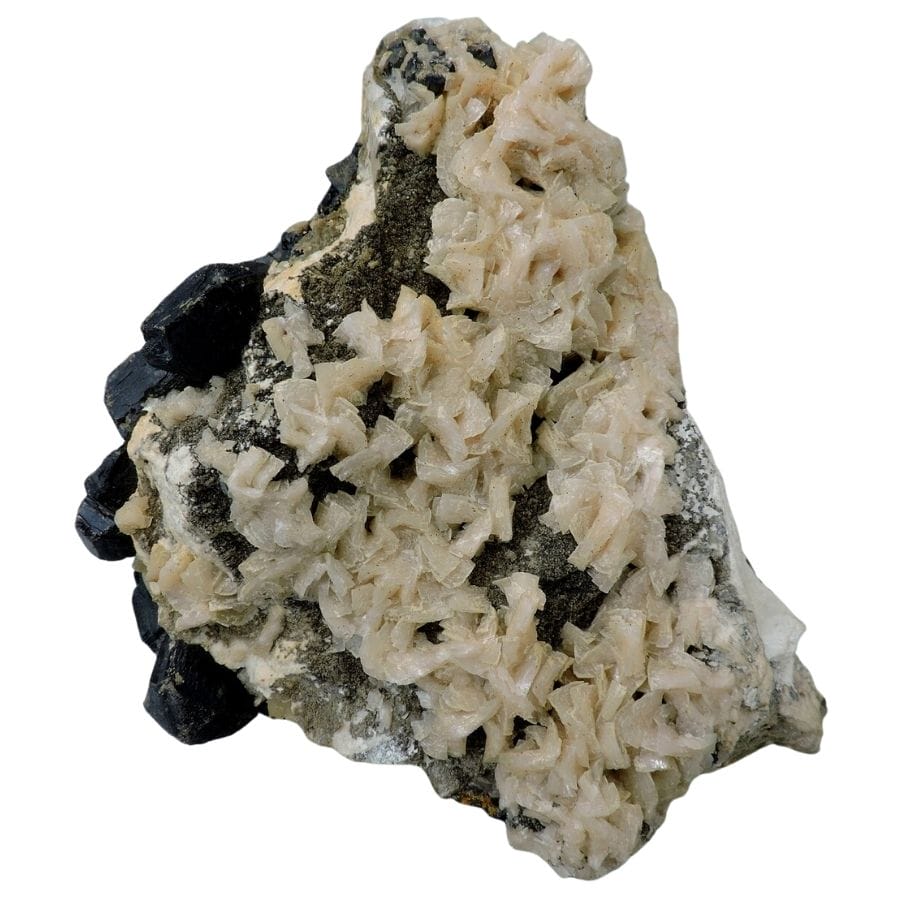
Dolomite is similar to limestone but has magnesium in it, which gives it a slightly different composition.
It forms in a couple of ways: either directly from the crystallization of magnesium-rich water or from the alteration of limestone by magnesium-rich water.
Dolomite is usually white or light gray, but it can also be pink, green, or brown, depending on impurities. It often forms small, rhombohedral crystals, which means they look like slightly tilted cubes.
This mineral can be used in various industries. It’s used in making cement and as a building material. Because dolomite can withstand high temperatures, it’s also used in furnaces and kilns.
In agriculture, dolomite is used to enrich soil with magnesium and calcium.
Where you can find dolomite in Connecticut
- New Britain, Hartford County
- North Canaan, Litchfield County
- East Haven, New Haven County
Fluorite
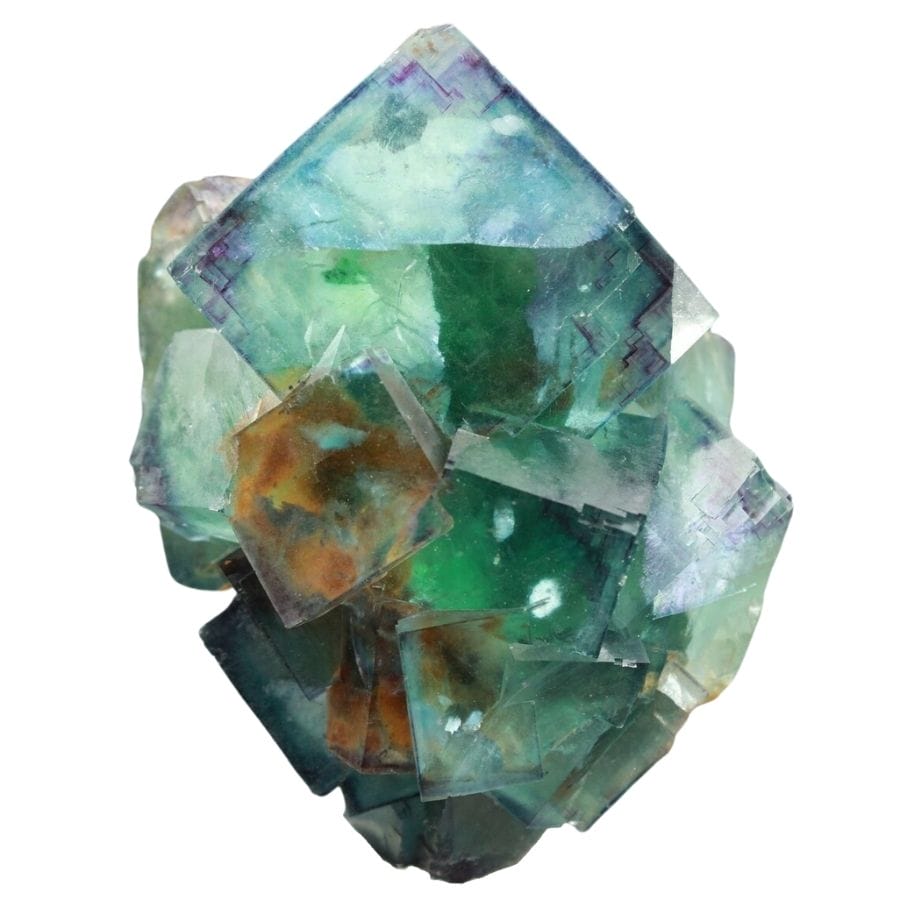
Fluorite comes in a wide variety of colors and has a beautiful, glassy appearance. It can be purple, blue, green, yellow, or even colorless, and sometimes a single crystal has multiple colors.
This variety of colors in fluorite comes from different impurities in the mineral.
Fluorite forms in a variety of geological environments, often in places where hydrothermal activity has occurred, which means it’s formed from hot, mineral-rich water.
Also, this mineral often forms cubic crystals. These well-defined shapes are fascinating to see and are a big reason why fluorite is so appealing to collectors.
Its color and clarity are also important; bright, clear crystals are more valued than dull or cloudy ones.
Additionally, its ability to fluoresce, or glow under ultraviolet light, adds to its appeal.
In addition, fluorite is also used in industry. It’s a source of fluorine, used in a variety of chemical manufacturing processes.
Where you can find fluorite in Connecticut
- Thomaston, Litchfield County
- Trumbull, Fairfield County
- Portland, Middlesex County
Goethite
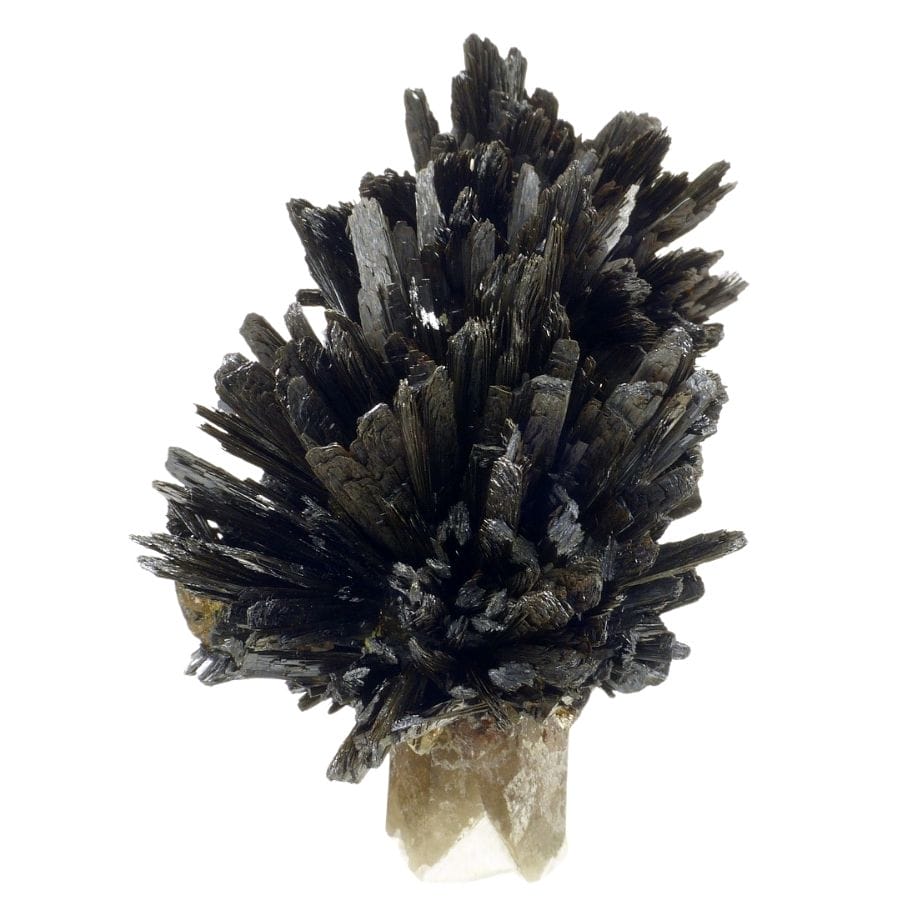
Goethite is an iron oxide mineral, known for its brown to yellow-brown color, and sometimes it even has a reddish tint. It forms in a variety of ways, often as a result of the weathering of other iron-rich minerals.
This means it can be found in places where iron minerals have been exposed to water and oxygen.
It can be found in soil, in bog iron deposits, and as a component in some types of ore. Goethite often forms in elongated or needle-like crystals, but it can also appear as earthy masses.
This mineral is an important ore of iron, which makes it valuable in a variety of industries. The way it forms can also tell us a lot about the environmental conditions of the area where it’s found.
Where you can find goethite in Connecticut
- East Haven, New Haven County
- Salisbury, Litchfield County
- East Hampton, Middlesex County
Kyanite
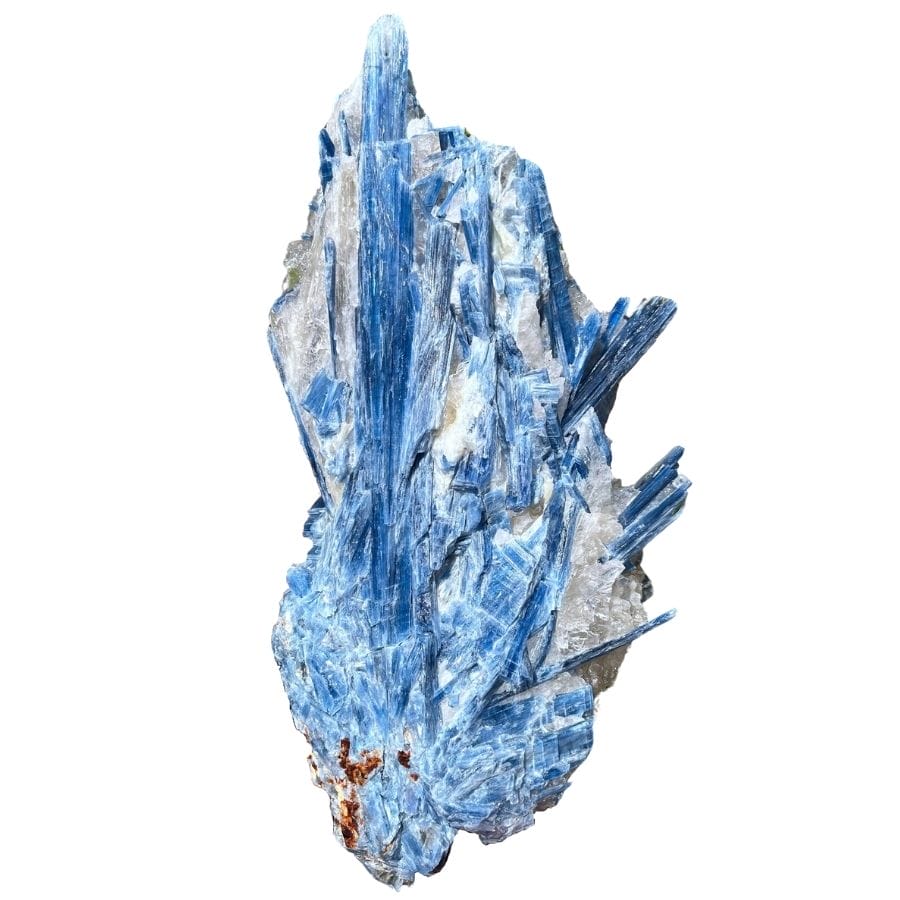
Kyanite often appears as elongated, blade-like crystals, making it easily recognizable. The distinct blue color of kyanite varies from light to dark shades, and this color is one of its most defining features.
The hardness of kyanite is quite unusual; it varies depending on the direction in which it’s tested. Along the length of the crystal, it’s quite tough. However, across the crystal, it’s much easier to break.
Kyanite’s value is influenced by several factors. Its color, clarity, and the way it’s cut can greatly affect its appeal, especially for use in jewelry. For mineral collectors, the perfect, well-formed crystals of kyanite are highly sought after.
In may industries, kyanite is valuable because it’s used to make heat-resistant products. It’s also used in making spark plugs and in the ceramics industry.
Where you can find kyanite in Connecticut
- Washington, Litchfield County
- Ratlum Mountain, Hartford County
- Redding, Fairfield County
Molybdenite
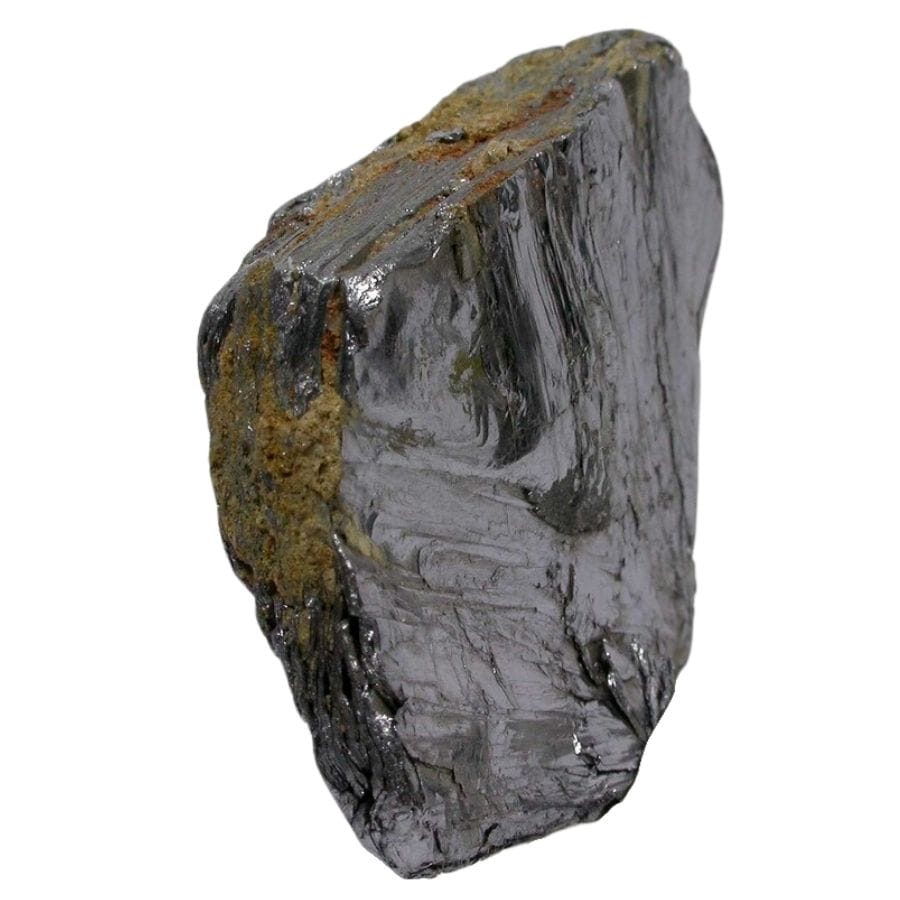
Molybdenite is a unique mineral that we sometimes find among the crystals found in Connecticut. It’s known for its metallic luster and lead-gray color, making it quite distinctive.
This mineral is composed of molybdenum and sulfur, and it often forms in a hexagonal crystal structure. These crystals can appear as thin, flat plates or as larger, more defined shapes.
As a source of molybdenum, molybdenite is important in different industries. Molybdenum is used to make high-strength steel and other alloys. In addition, it’s used in lubricants and in the production of certain chemicals.
Where you can find molybdenite in Connecticut
- Middletown, Middlesex County
- Haddam, Middlesex County
- Southbury, New Haven County
Prehnite
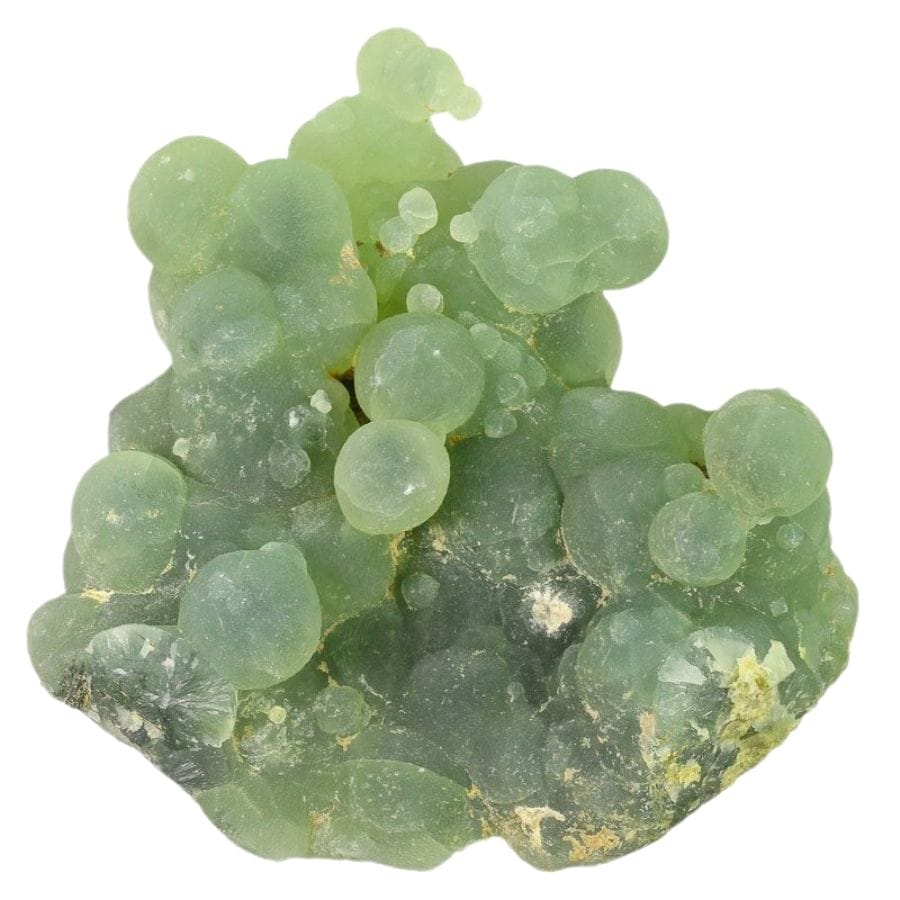
Prehnite is known for its beautiful green color, which can range from pale to a rich, deep green. It forms in the cavities of volcanic rocks as a secondary mineral, meaning it forms from the fluids that remain after the rock has solidified.
One of the remarkable things about prehnite is its crystal form. It often grows in rounded or globular aggregates, which can look like bunches of grapes.
This distinctive form, combined with its pleasing color, makes prehnite a favorite among mineral collectors.
For geologists, prehnite is valuable because finding it can provide important clues about the geological history of an area. It tells us about the conditions under which the rock it’s found in was formed.
Where you can find prehnite in Connecticut
- Woodbury, Litchfield County
- East Granby, Hartford County
- Plainville, Hartford County
The Most Valuable Rocks and Minerals in Connecticut
Some minerals are valuable because of their rarity and the high prices they fetch. Others are valuable for their practical applications, contributing significantly to various industries.
This blend of monetary and industrial value makes Connecticut’s geological landscape particularly fascinating. Here are some of the most valuable minerals in the state:
Copper
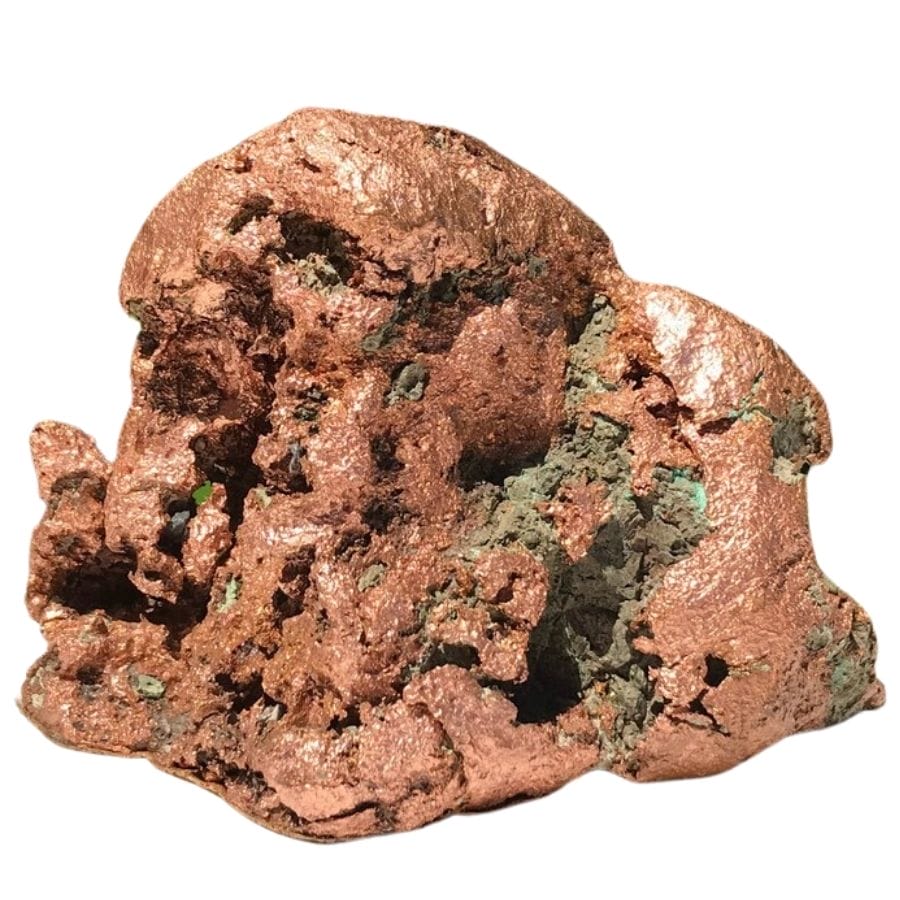
Copper is a fascinating and versatile mineral that’s known for its excellent ability to conduct electricity and heat. It’s known for its distinctive reddish-brown color and is one of the few metals that can be found in nature in its metallic form.
Copper forms in various ways, but most commonly, it’s found in mineral deposits where volcanic activity or hot, mineral-rich fluids have altered the rocks.
The value of copper comes from its many uses. It’s a key material in electrical wiring and plumbing due to its excellent conductivity and malleability.
In addition, copper is also used in coinage and in the production of bronze and brass.
For collectors, the natural beauty of copper, especially when it forms into unique shapes and structures, is highly appealing.
Where you can find copper in Connecticut
- Hamden, New Haven County
- East Granby, Hartford County
- Trumbull, Fairfield County
Graphite
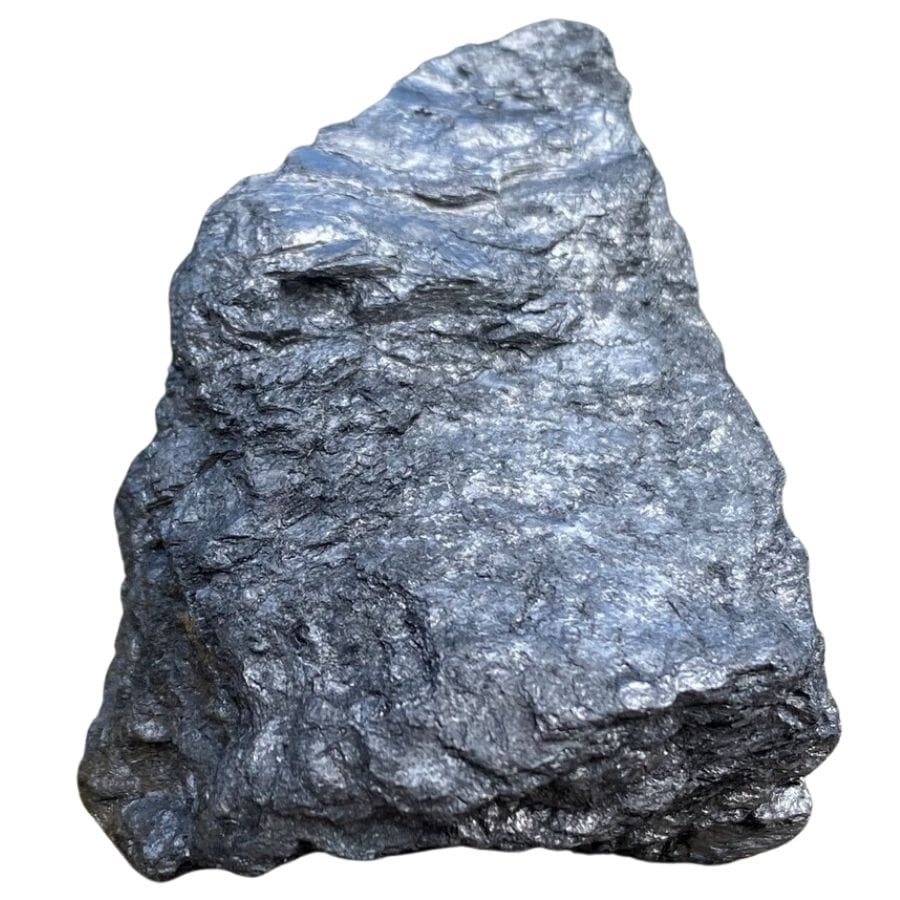
Graphite, a mineral that’s both interesting and useful, is one of the valuable rocks in Connecticut. It’s known for its metallic luster and black color, and it feels greasy to touch.
Graphite is made only of carbon, the same element that diamonds are made of. However, graphite’s atoms are arranged in sheets, which makes it soft and slippery.
One of the coolest things about graphite is its variety of uses. It’s well known for being used in pencils, where its softness allows it to leave a mark on paper.
But graphite is also used in many industrial applications because it’s a great conductor of electricity and can withstand high temperatures. It’s used in batteries, brake linings, and as a lubricant.
Where you can find graphite in Connecticut
- Haddam, Middlesex County
- Cheshire, New Haven County
- Danbury, Fairfield County
Hematite
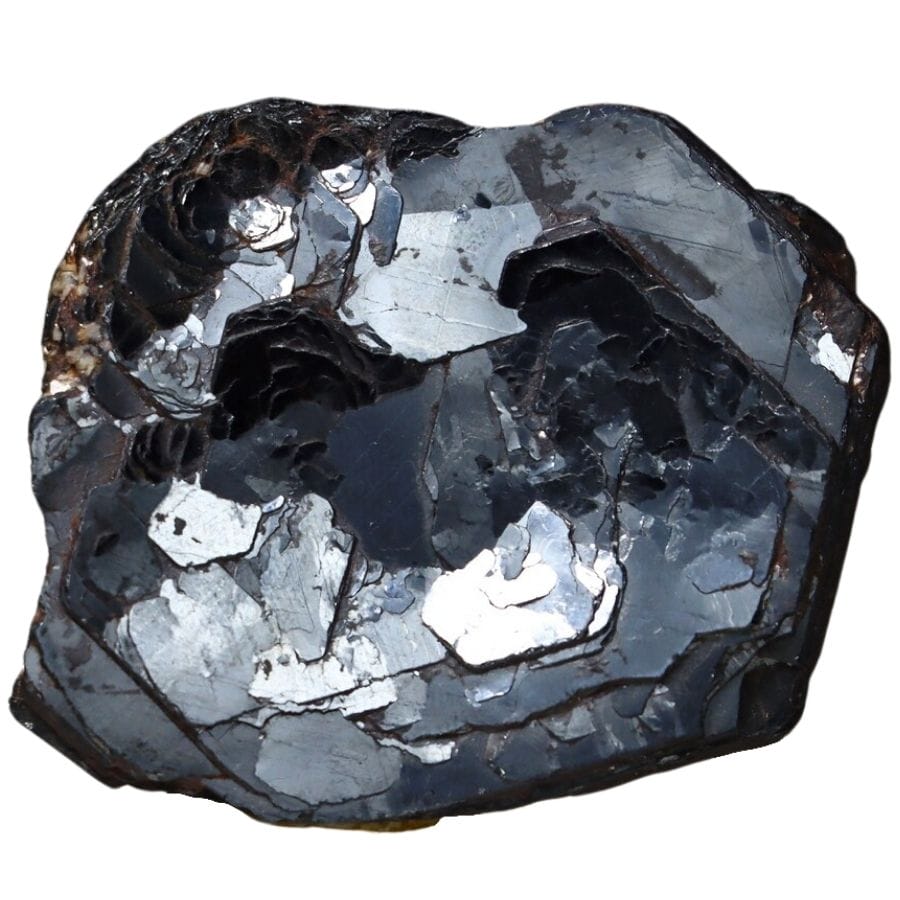
Hematite is an intriguing mineral that we often encounter in Connecticut’s rocks, known for its shiny, metallic appearance and reddish-brown color. It’s actually an iron oxide, and it gets its color from the iron content in it.
Hematite forms in several ways, but one common method is through the oxidation of iron-rich minerals. This can happen in both wet and dry environments, making hematite a pretty versatile mineral.
One of the unique things about hematite is its weight. It’s much heavier than it looks, which is a big clue for identifying it. It can form beautiful, shiny crystals, but it’s also found in more earthy, non-crystalline forms.
The metallic sheen of hematite makes it popular in jewelry and decorations. But more importantly, hematite is a major ore of iron, which means it’s used to make steel and other iron products.
This industrial use makes hematite one of the most economically important minerals.
Where you can find hematite in Connecticut
- East Granby, Hartford County
- Salisbury, Litchfield County
- East Haven, New Haven County
Zircon
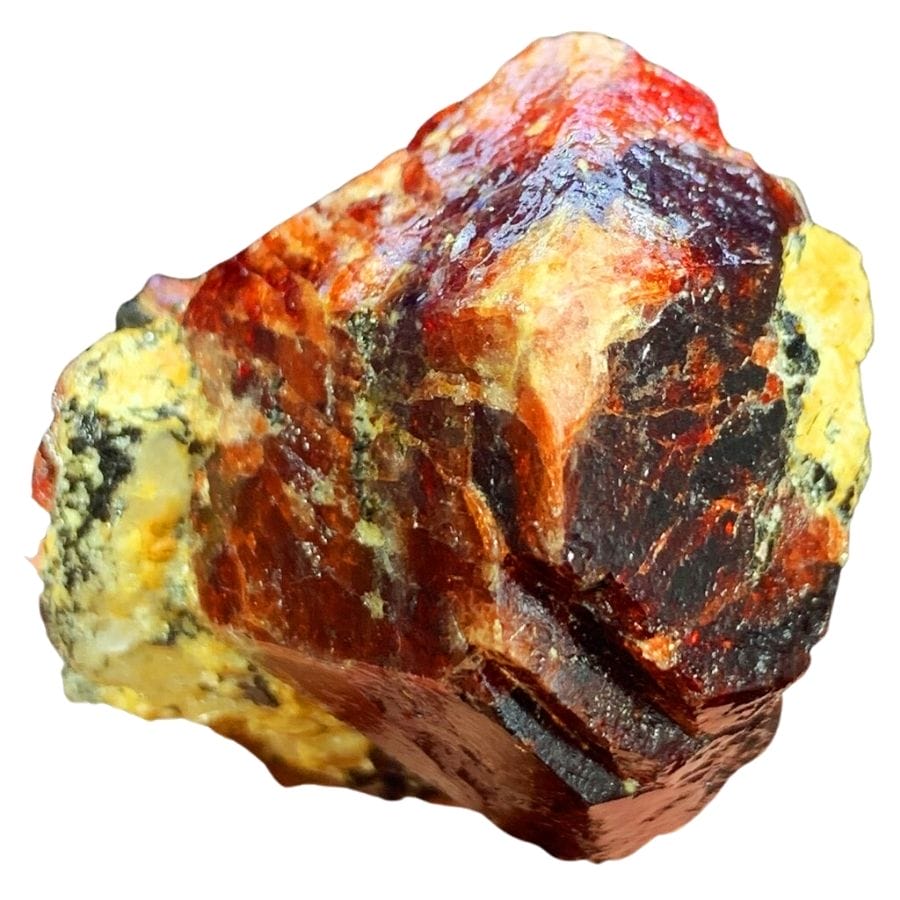
Zircon is made up of zirconium, silicon, and oxygen, and it forms in both small and large, well-formed crystals. The variety of colors in zircon is due to different trace elements that get into the mineral as it forms.
One of the coolest things about zircon is that it’s the oldest known mineral on the planet. In fact, some zircon crystals have been found to be billions of years old.
In addition, zircon is one of the hardest minerals. Its hardness and resistance to weathering make it stand out in the rocks where it’s found. Zircon’s hardness and wide range of colors make it popular in jewelry.
For geologists, zircon is extremely valuable because it can be used to date the rocks in which it’s found. This is because zircon crystals can contain uranium, which allows scientists to use them to measure the age of rocks.
Where you can find zircon in Connecticut
- Middletown, Middlesex County
- Glastonbury, Hartford County
- Redding, Fairfield County
How to Identify The Rocks and Minerals You Find
If you find a rock and you’re not sure what it is, there are certain things you can do to find out what it is. You won’t have to be an expert to identify many kinds of minerals; all you’ll need is experience and a bit of know-how.
UV Light Testing
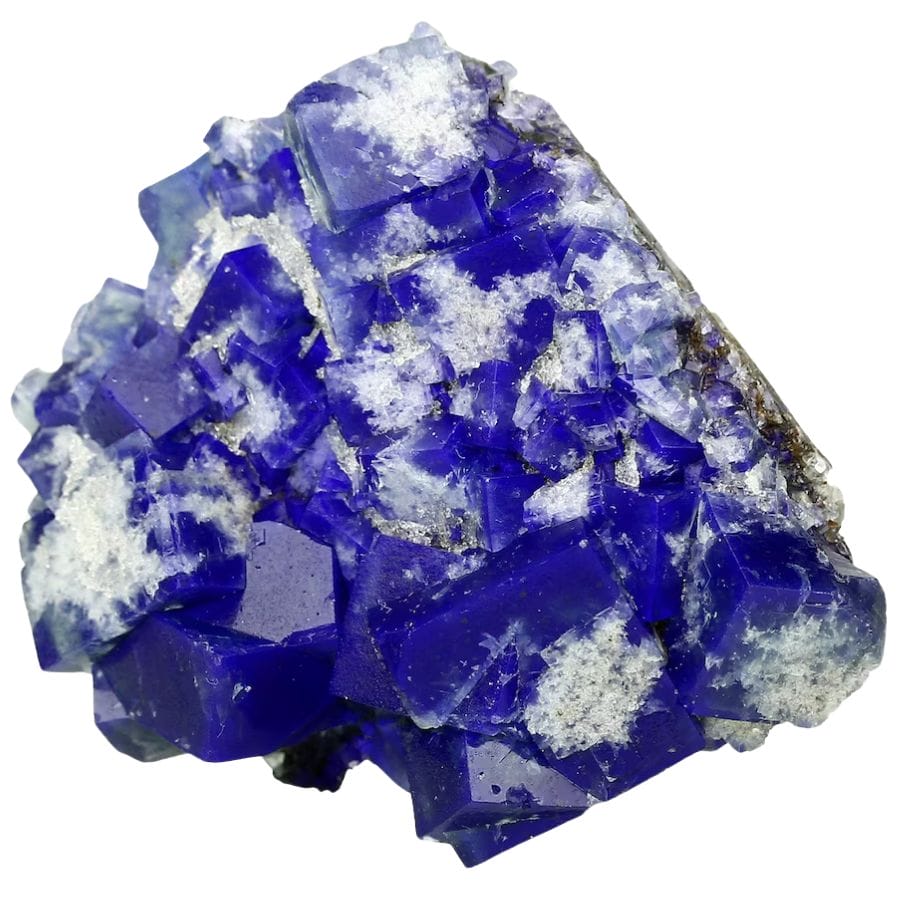
Some minerals have a special ability to glow under ultraviolet light. This is a property known as fluorescence.
This glow can be in various colors like green, blue, red, or yellow, depending on the mineral. For example, calcite often glows red or orange, while fluorite can glow a bright blue or green.
When we shine a UV light on a mineral, the way it fluoresces can help us figure out what it is. Not all minerals will glow, but those that do are giving us important information.
The color of the fluorescence can also be a big hint about the mineral’s composition.
Fluorescence can be seen in both rough and polished stones, making it a versatile identification method. Sometimes, minerals that look similar under normal light can be easily distinguished by their fluorescence.
This technique is especially helpful when other identification methods like hardness testing are inconclusive.
Magnet Testing
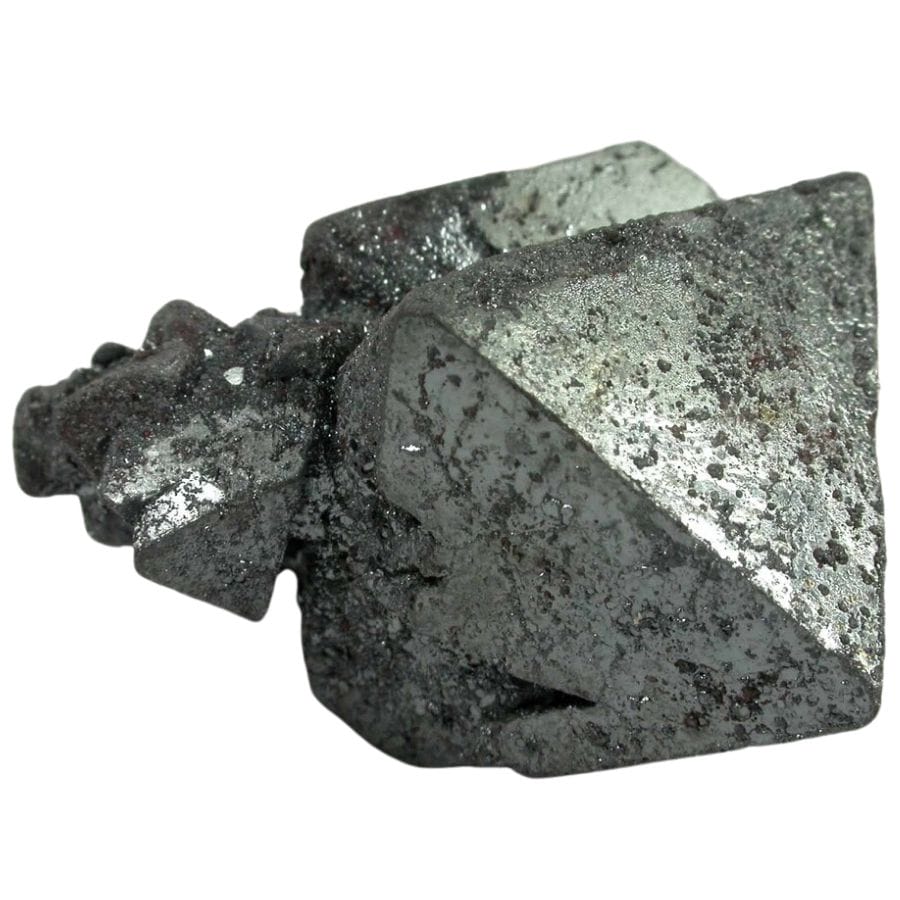
Identifying rocks, minerals, and gems by looking at their magnetism is a fascinating process. When exploring in Connecticut, we often
When you’re out collecting rocks, it’s a good idea to carry a magnet to test the rocks you find. If a rock or mineral is attracted to the magnet, it’s a strong sign that it contains iron or iron-bearing minerals.
This simple test can quickly tell us a lot about a rock’s composition.
Magnetism is especially useful for identifying minerals like magnetite, which is naturally magnetic. Magnetite will stick to a magnet, making it easy to spot among other rocks.
Another mineral that responds to magnets is hematite, although its magnetic pull is usually weaker.
When a rock is attracted to a magnet, it’s a clue that it might contain one of these minerals.
Cleavage and Fracture
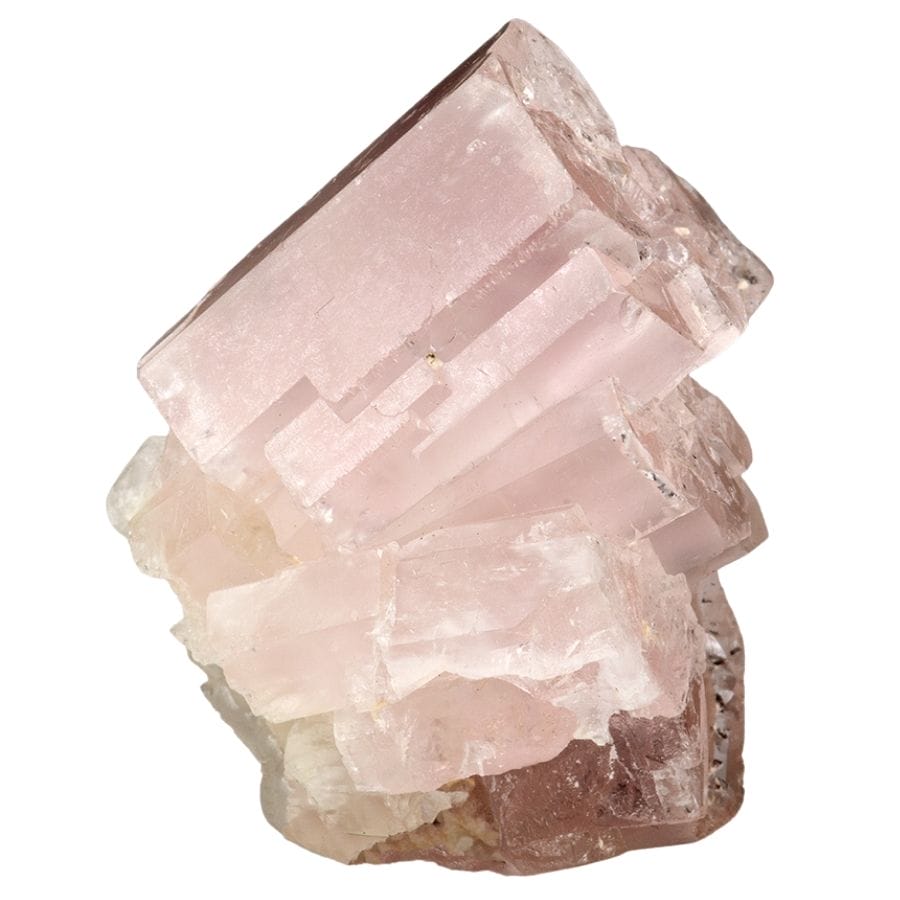
In Connecticut rock identification, understanding cleavage and fracture can be instrumental in figuring out what a mineral might be.
Cleavage refers to the way some minerals break along flat, smooth planes, which are natural areas of weakness in their structure. Minerals with good cleavage will break in straight lines and create flat, shiny surfaces.
For example, morganite has perfect cleavage and therefore has a smooth and flat breakage surface.
On the other hand, fracture describes how minerals break in irregular, non-planar patterns. When a mineral doesn’t have natural planes of weakness, it breaks in a more random, uneven way.
Quartz, for instance, often breaks with a fracture known as conchoidal, which looks like the inside of a seashell.
Acid Testing
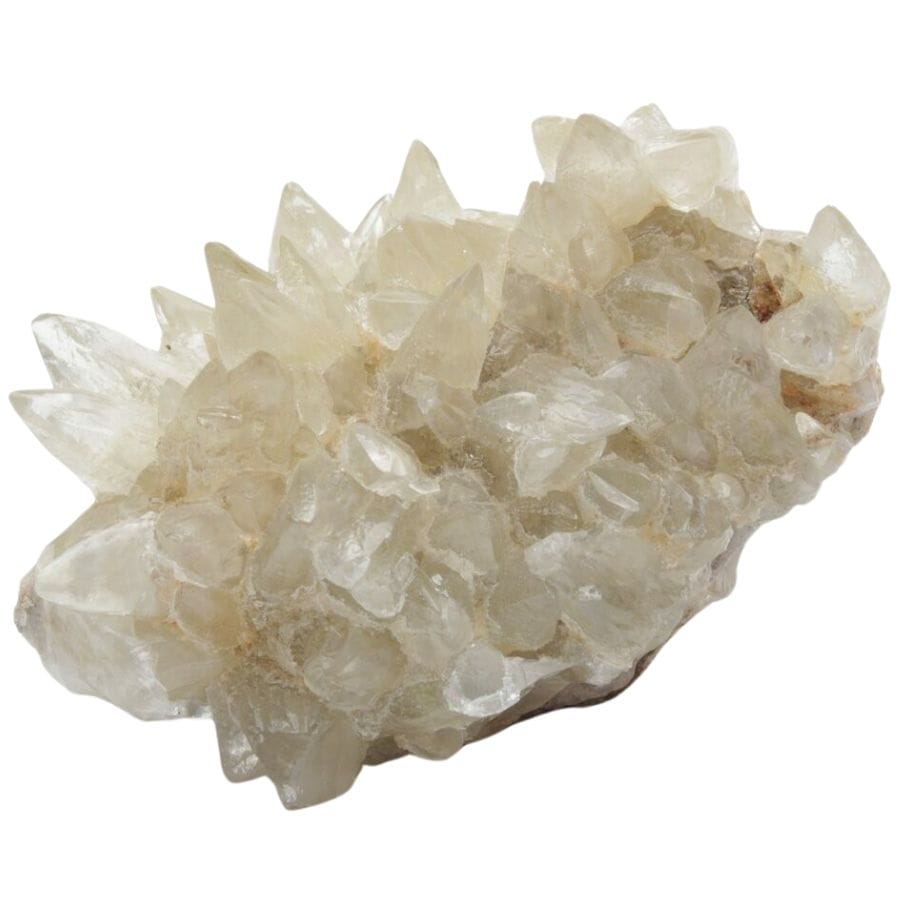
One common method when identifying rocks and minerals involves using a drop of acid on the surface of a mineral. If the mineral contains carbonate, like calcite or limestone, it will react by fizzing or bubbling.
This reaction happens because the acid reacts with the carbonate compound in the mineral to release carbon dioxide gas.
This test is particularly useful in distinguishing carbonate minerals from others that may look similar. For minerals like dolomite, the reaction might be slower or less intense compared to calcite.
Not all minerals will react to acid, only those with carbonate content. When there’s no reaction, it suggests the mineral does not contain significant carbonate.
Using acid to test minerals should be done with care and safety. Wearing gloves and safety glasses is important to protect against the acid, even though it’s usually a weak solution.
Transparency and Opacity
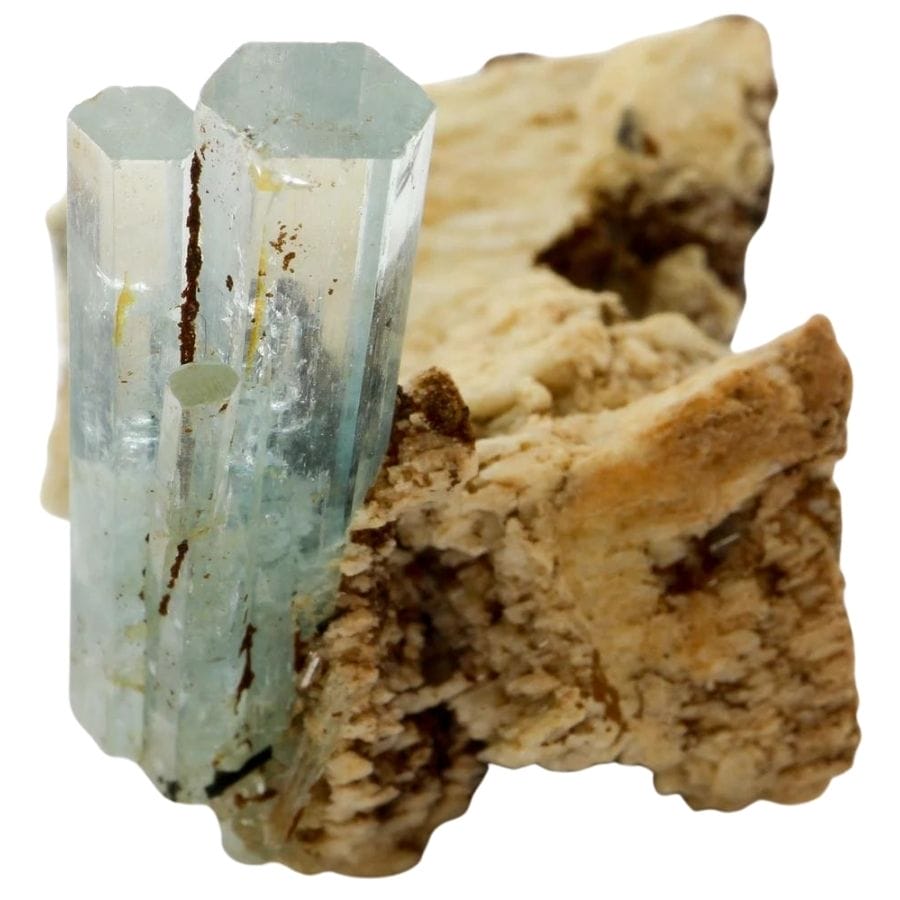
Diaphaneity is an interesting property of minerals that describes how light passes through them, and it’s a great tool for identification. It tells us whether a mineral is transparent, translucent, or opaque.
Transparent minerals let light pass through them so clearly that we can see through to the other side, like looking through a pane of glass. For example, aquamarine can be transparent, allowing us to view objects through it clearly.
Translucent minerals allow light to pass through, but objects on the other side can’t be seen clearly. Calcite often falls into this category, letting light through but blurring things behind it.
Then there are opaque minerals which don’t let any light pass through. These minerals, like pyrite, block light completely, making it impossible to see through them.
Understanding diaphaneity involves holding the mineral up to a light source and observing how much light passes through. Some minerals may show different levels of diaphaneity depending on how they are cut or how thick the sample is.
Checking diaphaneity can help you quickly narrow down the possibilities when trying to identify a mineral.

